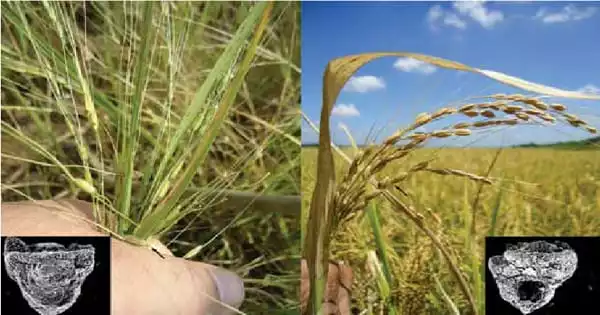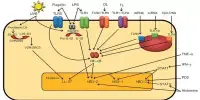Researchers compared domesticated rice to its wild counterparts in a new study to better understand the differences in their photosynthetic abilities. The findings have the potential to boost rice productivity in the future.
Millions of people in Asia rely on rice as a staple food. Rice, which is thought to have been domesticated as early as 6000 BCE, is a major source of calories worldwide. Researchers compared domesticated rice to its wild counterparts in a new study to better understand the differences in their photosynthetic abilities. The findings have the potential to boost rice productivity in the future.
Oryza rufipogon and Oryza nivara are weed-like wild rice species that grow taller than cultivated rice Oryza sativa. While these characteristics are advantageous in the wild because they can shade out competitors, they are unfavorable in an agricultural setting and can result in lower yields. Many rice varieties have been selected through domestication and breeding to be short with erect leaves with steep angles, allowing for better light distribution through the canopy. Despite these advancements, the distribution remains uneven and is influenced by changes in wind and cloud cover.
We discovered that, while the wild rice species’ photosynthetic induction was much faster, the domesticated species was much faster at closing its stomata, resulting in less water loss.
Acevedo-Siaca
“Previously, researchers concentrated primarily on photosynthesis under constant high light conditions. Plants in a field, on the other hand, are always in dynamic conditions, with leaves rarely receiving constant light due to clouds, overlying leaves moving in the wind, and intermittent shading caused by the movement of the sun” Liana Acevedo-Siaca, the paper’s first author, was a graduate student in the Long lab at the time this work was done. “Furthermore, other researchers have only studied domesticated rice in the context of photosynthetic induction. We wanted to see what had changed over time by comparing them to their forefathers.”
Several photosynthetic changes occur in the leaves when the light environment changes from shade to sun and back. The leaves begin to take up more carbon dioxide for photosynthesis during the transition from low to high light, a process known as photosynthetic induction. This process occurs several times per day in a field, and because photosynthesis is not immediately adjusted, it reduces photosynthetic performance over the course of a day and a growing season. In contrast, during the transition from high to low light, the stomata (minor openings in the leaves through which carbon dioxide, water vapor, and oxygen move) may close too slowly, resulting in unnecessary water loss.

Acevedo-Siaca grew the plants in a screenhouse, a greenhouse with open walls, at the International Rice Research Institute in the Philippines, to compare carbon dioxide uptake and stomatal water loss between wild rice and O. sativa. She measured how much CO2 was taken up by the leaf using an infrared gas analyzer and controlled the light levels to mimic some of the light fluctuations seen in natural crop canopies.
“We discovered that, while the wild rice species’ photosynthetic induction was much faster, the domesticated species was much faster at closing its stomata, resulting in less water loss,” Acevedo-Siaca said. “It is possible that because O. rufipogon and O. nivara grow in more diverse ecosystems, there may be more competition for light and thus more incentive to respond quickly to environmental changes.”
“We discovered differences in photosynthesis in fluctuating light that were not reflected in previous studies that used constant high-light conditions. Despite the small size of the study, we hope that our findings are indicative of larger trends “According to Acevedo-Siaca. “Characterizing photosynthetic induction at different levels of the canopy will inform future studies because, in theory, leaves adapted to low light conditions will respond differently than those adapted to high light conditions.”
“We wanted to know if rice domestication had inadvertently improved its photosynthetic efficiency. Alternatively, if the breeding process was detrimental to specific characteristics, we may be able to return to wild rice and introduce those traits into domesticated rice “Stephen Long (BSD/CABBI/GEGC), the Ikenberry Endowed University Chair of Crop Sciences and Plant Biology, shared his thoughts. “We’re also working on similar projects with other crops like cowpea and soybean.”
















